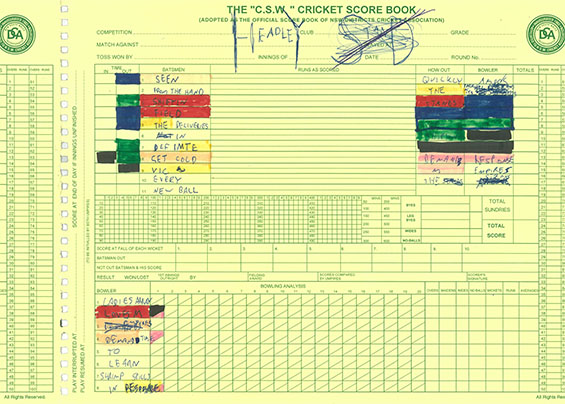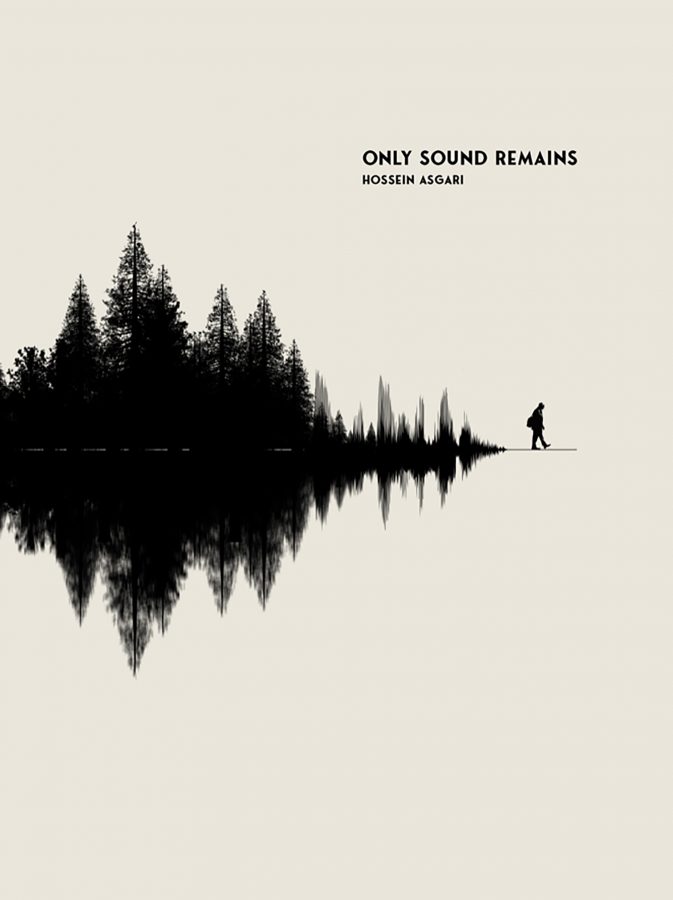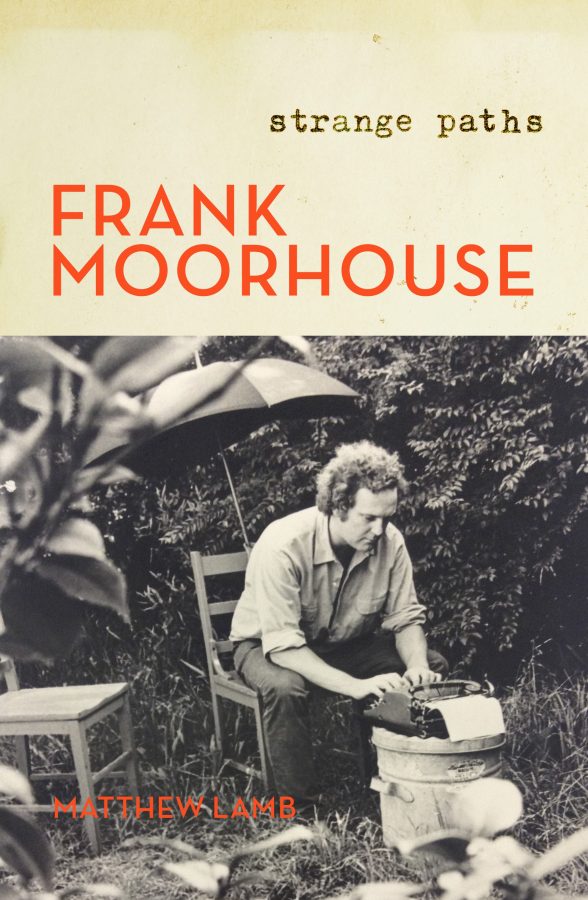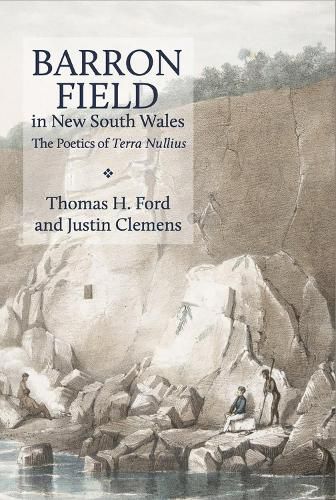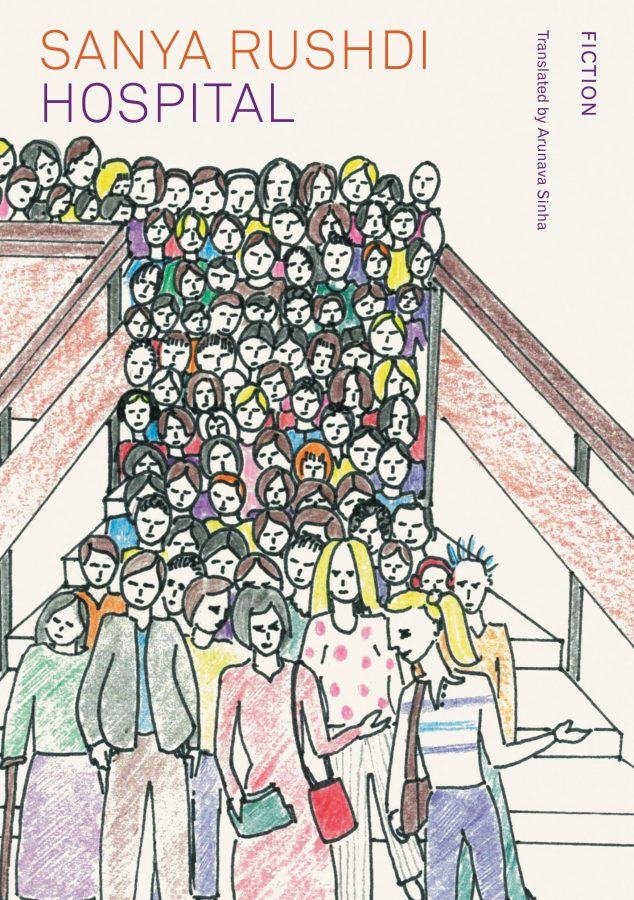Melbourne’s (formerly Sydney’s or Bega’s or Wyndham’s) Nick Whittock is something of a cult figure within Australian poetry: as much as such a thing is possible in such a small scene. He is perhaps better known than he seems, too, as his poetry, almost totally devoted to the subject of cricket, has appeared regularly in cordite, which in its online version has become Australia’s major poetry journal. cordite featured Sam Kidman’s interview with Whittock in 2003, and also published covers, Whittock’s first book, in 2004. Whittock’s paradoxical visibility, then, is a product of the internet, as poet obscurity is now most easily achieved by refusing an online presence. For non-refuseniks, what’s interesting is likely to circulate: especially, in this case, when the writing is a completely unexpected, wittily fused celebration and critique of Australia’s other national sport.
According to John Ashbery ‘the avant-garde artist is a kind of hero’. While some may baulk at such a notion, it all depends on the hero. Tadeusz Pióro, who quotes Ashbery’s statement in reference to Frank O’Hara, notes that Ashbery ‘ignor[es] the demands of academic theoreticians that the avant-garde present to them a coherent political identity’, adding: ‘Heroes must be dealt with on a case-by-case basis’. The Australian poets that followed Ashbery were not necessarily born under the sign of the New York School of poets, but all, I would say, bear the benefits of the New York School’s stand for wit, pleasure and comedy.
Avant-garde is a perfectly good English word we can use or not. It doesn’t need to come with baggage regarding Paris, New York, cultural cringe or Black or Tambourine (‘blue hills towards Tambourine’, Laurie Duggan) Mountain. A conceptual avant-garde doesn’t need any of that. It doesn’t have to be against anything or caught up in affirming war and its metaphors. Language can’t be clean any more than money can. If you have any interest in aesthetics (and I use that term lightly too), then avant-garde can be something instinctual: we don’t think about whether something’s rad or sick, we just respond. When I watched Bennett Miller’s Moneyball, for example (without knowing who the director was), I had the immediate impression that it was an avant-garde work. If you google the expression ‘very avant-garde’ it gets about 74,000 results as of this writing, many from the 2010s. One refers to a description of nineteenth-century American president Rutherford Hayes as a ‘very avant-garde person not only in his acceptance of technology but in every aspect of his life’. Not only does the present change the past, but moments in history change other moments in history. Which brings us to aspects of both the contemporary – specifically as it relates to poetry – and to twentieth-century ideas of the avant-garde. The avant-garde was said, in some frameworks at least, to be undoing the distinction between art and life. In Dada, to name just one framework, this manifests as a protest against the banality of life (including the banality of war) and a critique of the shocking.
The relation of the everyday – where even the intertextual is right there: what’s being read, seen or listened to – to the avant-garde recalls those poets whose work is preoccupied with the everyday, readymade as it were, as a de facto avant-garde: the oft-cited-together Laurie Duggan, Pam Brown and Ken Bolton. Yet I’m not sure that to claim them as avant-garde is very interesting. While we expect difference between any two poets in a movement or coterie, or post-coterie (the triumvirate haven’t lived in the same place for decades), the problem is that it distracts from the poems. In Coalcliff Days, a memoir-cum-art catalogue of their most unified time, in Coalcliff, NSW, in the late 70s to early 80s, Bolton refers to them (‘them’ including a number of other writers and artists) as a ‘here-today, gone-tomorrow phenomenon’, adding ‘We were a self-selecting group’, but then two sentences later: ‘Were we a group in fact?’ Bolton is far from staking a claim of an artistic, or other, kind, and that of course is part of the point: if anything, they were (are) artists against aggrandisement. These poets might, therefore, be embarrassed by the term ‘hero’ or even ‘poetry hero’, but arguably it takes an amount of heroism to persist as a poet in Australia.
We can also read the motive of the life/art dissolve in the very different contemporary practices of document poetry, poetry of the body, and internet poetry, or conceptual poetry. Any of these later poetries might be called avant-garde: it’s a matter of staking a claim. Which is not what I want to attempt here, I am merely arguing that it’s a perfectly acceptable term: terms are remade. If they’re defunct they go into disuse, you can’t argue them out of existence. The term circulates, and attaches, subjectively, to moments, works, contexts, writers, events. While the notion of what we might call a horizontal avant-garde, a contemporary grouping, persists, there is also the possibility, demonstrated by Ashbery in an influential series of lectures, Other Traditions (2000), of constituting a personal version, a vertical avant-garde: of individualists such as John Clare, Raymond Roussel and Laura Riding. When I think of the most individual Australian poets, I think of those on the border between poetry and visual and/or sound art: Chris Mann, Amanda Stewart, Ruark Lewis, Patrick Jones and Nick Whittock. (Not that unique poets qua poets don’t also exist.)
Digital technology, including word processing, has resulted in a turn to the visual in contemporary poetry: making certain kinds of graphics (such as clip art), photographs and analog images, via scanning, readily reproducible. Whittock’s visuality connects his poetry to a number of younger Australian poets: Toby Fitch, Jessica Wilkinson, AJ Carruthers. In his latest book, hows its, Whittock uses a variety of strategies, but it is the scanning of drawings and hand-written text – in colour – that is striking: shocking even. The title is individually stencilled on the cover of each copy of the book. The cover of my copy has a small spray of orange paint also. Whittock’s is an artists’ book as well as a poetry book, whereas the others just named lean more towards design. Visual elements have been a feature of Whittock’s poetry since covers (2004), which uses archival photography of cricketers lying or falling to the ground: mostly trying to take catches presumably, though they were also taking ‘cover as a flying bomb passes overhead during a wartime match at Lords’. Not that there is any more cover at Lords than at any other cricket ground. His Vagabond chapbook The Doon (2012) has just one explicitly visual page: of a series of smudged horizontal lines, as if crossings out in thick texta. Or are they photocopied knives? Long lines stick out below shorter lines, suggesting a tank, or Dalek, giving a war-on-the-earth inflection to lines on the left facing page: ‘trees (watertanks)re trees trees watertanks those useless watertanks,/take the log way’ (‘sie t-ins 88’), perhaps also alluding to trees and water tanks as sites of drover graffiti. The poem also refers to Don Bradman and an 1885 match.
The everyday quality of cricket might suggest a perfect match with avant-garde writing, but cricket hasn’t always and everywhere been as it is in Australia: an assemblage of backyards, racism and Twitter-fed sex scandals. (Of course, cricket can also be thought of as striking a blow against racism: not only through demonstrating that skill is more important than colour, but, through giving rare TV space to black and brown men.) Class was once a bigger issue than race, however. Anthony Bateman, author of Cricket, Literature and Culture: Symbolising the Nation, Destabilising Empire, notes that in England, at the time of the Oscar Wilde trial, cricket was held up as an exemplar of ‘Victorian respectability and aesthetic orthodoxy’. The ironies of cricket’s relation to conservatism and empire are complicated as Bateman demonstrates: just a year later, in 1896,
At a time when the disavowal of the economy had been placed at the very heart of the cricket field (embodied in the literary cult of the charismatic amateur), the Australians were represented as the embodiment of the sordid values of professionalism, and blamed for politicising and destabilising the otherwise innocent cultural space of the cricket field.
The British team went on strike in protest at the rumoured amounts of money the Australians were being paid. Yet for ‘more liberal writers such as Albert Knight’, cited by Bateman, the issue was not money at all, but the lack of ‘necessary social pedigree’, i.e. in order to claim amateur status. If only Wilde, instead of being gaoled, had been commissioned to write a three-act comedy on the scenario.
Bateman comments that ‘the limited spread of cricket meant that it was safe from the potentially iconoclastic treatment of the European avant-garde’. It is, I think, in Whittock, that cricket has found its Dada interpreter, and while his poetry derives from being a fan of the game, it could – if poetry only had the power – be seen as destroying it. Cricket and Whittock’s poetry present parallel universes of mystery to the uninitiated: but at least with his texts you have intertextual clues to help you through.
Another mode, associated with tradition rather than with any kind of break, networks cricket into a particular – and particularly European – code: that of pastoral. Despite exceptions, as Bateman notes, such as providing material for novelists Woolf and Joyce, cricket, ‘With its hard-earned antique and pastoral image … hardly accorded with modernism’s largely metropolitan palette’. A match is a pastoral venture of competing shepherds with their flocks (teams) taking place in the small world of a field resembling an agricultural field in ideal form. There may not be much singing in a match, but song and music are everywhere in Whittock’s poems (along with film and other cultural forms, including novels: a totalising tendency in art that still exists, despite bureaucratic and other pressures to keep genres distinct). The poem ‘justin langer’, from covers, evokes an Australian (anti)pastoral: ‘langer looks the/drought in the eyes’ (later, in ‘adelaide oval: india by 4 wkts’, ‘langer has a laconic stance drive/ a bullock dray into dimboola’). The metaphorical drought is presumably that of runs, yet there are further references to the desert, to trees, and to landscape. This poem is followed by a short untitled lyric about ‘marto’ (Damien Martyn), who misses a catch while dreaming of marigolds. Cricket is what grounds these poems, allowing referentiality to bounce all over the place, and language to break up, yet we are not lost, we are still in the space of cricket (and poetry).
It’s easy to imagine Whittock’s work remaining unrealised if it weren’t for a generous poetry climate and the specific goodwill of his publishers. If Whittock has any friends in the writing of his enterprise, however, they are the Australian cricket team: not to mention a few exceptions from other nations, such as the Indians Sachin Tendulkar, Rahul Dravid, Sourav Ganguly, and VVS Laxman, as well as the English Andrew Flintoff and Graham Onions. West Indian Brian Lara is particularly significant: his name (and spirit?) contributes to the conflation of the mysterious character Clara who appears throughout Whittock’s writing. Clara’s other contributors are Michael Clarke and his once girlfriend Lara Bingle; Clarke also appears under the name Beopup in hows its: his nickname ‘Pup’ morphed into the name of a Pokemon. This punning scenario is taken to the next level by enacting a ‘scorecard translation’ of Beowulf. Clearly, Whittock has come a long way since the dramatic monologues of cricketers in covers, though even then there was a conceptual edge: Sonny Rollins joins the team; Jason ‘Dizzy’ Gillespie has his name stretched even further to the Gullespie, the letter ‘m’s as they occur in ‘dizzy gillespie’ manifest as hand-written seagulls on the field of the MCG page. The poem ‘brett lee’, begins:
dropped dropping into
a torment mypoetry alone will save the world
the breeze
speed of my delivery
Another poem from covers, ‘steve waugh and his current insignificance at the crease’, opens with the estranging ‘steve waugh is a strange sport’. In the more recent hows its, a future Shane Watson is thinking of Wittgenstein and Bergson in 2020, and in ‘witto 1’ Wittgenstein and the author become one, erasing or, rather clarifying, the name ‘clara’ though crossing it out: here we have the destabilisation of European philosophy’s empire through Australian cricket poetry: if that doesn’t boggle your mind, you probably never spent the five summer days from Boxing Day watching a test match on TV. ‘witto 2’ might make us think of Deleuze’s theory of the ‘fold’ as Shane Watson is folded into a Wittgensteinian logic theorem. It’s an embracing poetry, allowing for wonderful titles like ‘We Ricky Ponting Concede’, and a particular, idiosyncratic social assemblage; later we find that ‘We Ricky Ponting’ are composed of a number of people, mainly cricketers, but Bingle again appears. From there, the logic seems inevitable: that the world competition that cricket is, when it competes (vs) against poetry, that formulas proliferate, that the (mythological) characters of cricket’s epic become interchangeable, and Beowulf, and Gilgamesh, of course, are part of the equation. It’s an even playing field. The book concludes with a parody of Max Walker’s formula, expressed in a number of his book titles as, How to Puzzle a Python, How to Hypnotise Chooks etc. Whittock’s list includes ‘HOW TO WOBBLE WOMBATS’, ‘HOW TO EGG AN EGO’, ‘HOW TO CHANNEL LARA’ and ‘HOW TO CHANNEL 9’ (caps in original). But it can’t really be said that the book concludes. The book’s gatefold cover reproduces score-book poems, and the back cover folds around to the front: endless cricket, endless poetry.
Whittock’s is an idealised cricket commentary (ideal from a poetics perspective), in that it demonstrates a constant, social, intertextuality with, as noted, Beowulf, but also Beckett, David Bowie, Moby Dick, Mental as Anything, Tom Raworth, Gilles Deleuze and Ruta Cruita (Ned Kelly’s horse). The Doon has references to Enid Blyton, Michael Jackson and Bob Dylan. covers has Donnie Darko, Mercury Rev and Hamlet. Not that this (incomplete) list is a remarkable amount of reference, but gives some idea of Whittock’s flexible attitude to cricket culture, and – and this is not negligible – what he – or his subject – likes. In the poem ‘michael slater’, there are references to ‘jon bon jovi’, ‘zorro’, ‘jedi’s, ‘nietzsche’, and ‘jackie chan and bono no not him’, but ‘i admire robbie williams’. There are also explicit references to Whittock’s Slater as a vampire, preparing us for the poems final image, also on the theme of admiration; the shock comes from the reference being the first to another cricketer in a 4-page poem:
i wander the suburbs
spit in the face of steve waugh dig
my fangs into his calf
he only wishes he was me
This is neither the fawning nor overly matey attitude we get used to in the press in relation to national sporting heroes. Whittock’s diction is perhaps closer to the diction of the field, irreverent and indecorous, as in ‘don bradmans wildly successful tour of nz’ from The Doon, which begins ‘which cuntre ya callin cunt cunt’ and goes on to mention ‘aids all over m penis w/unknotted condom’.
Name-checked British poet Raworth (a significant poet, if largely invisible in Australia, where the work of about three living British poets appears in bookshops) is some kind of indicator of style, and a clue to that of other young Melbourne poets like Sam Langer and Marty Hiatt: signs of a continuing “other tradition”. Deleuze may or may not have had an effect, but citing Deleuze need not be read as an academic gesture: rather, to exclude philosophers from the open form and reference maelstrom would itself be a contrivance given Whittock’s reading of them. One moment we are reading place names from the New South Wales south coast (Bega, Bemboka, Brogo) where Whittock hails from, the next we are in Melbourne’s Fitzroy. There is no cringe here about rural v urban culture. The poet is not in the field, in Charles Olson’s sense, but rather the words – the poetry’s players – are.
We can think of this poetry as conceptualising cricket in poetic terms, or, alternatively, as translating literature into cricket terms. Yellow and green (those metonymical Aussie colours), ‘The “C.S.W.” Cricket Score Book (Adopted as the Official Score Book of NSW Districts Cricket Association)’ is reinvented as visual poetry. It is then, to an extent, a found or appropriated form. We can imagine a presentation of (the poetry of) the scorebooks of old matches: but this would not take us very far. Whittock pushes the conceptual beyond the passivity of the kinds of curation that Kenneth Goldsmith has made famous: books like Day, Weather and Traffic. Although they are dubbed conceptual writing, and Goldsmith has co-edited (or co-curated) with Craig Dworkin an anthology Against Expression: An Anthology of Conceptual Writing that reframes the history of avant-garde writing in these terms, Goldsmith’s ‘uncreative writing[s]’ (his term) arguably, are not conceptual poems – at least not in the way Whittock’s are – but rather use the concept as a medium. Where the (admittedly exciting) Traffic consists of traffic reports, it is not the traffic or the reports that are ultimately the point, but Goldsmith’s appropriative practice. It is not so much the New York Times that is reframed as poetry in Day, but the project as such. We – as readers – may not care what the concept is or where it comes from as long as poetry – however we read it – is what is delivered. Without the large audiences and numbers of practising poets that the U.S. produces through its MFA programs alone, the kinds of appropriative, conceptual poetries that proliferate there may never flourish here in Australia, as much as they may enrich our reading. (There are exceptions, however: see, for example, Lorange, Patterson and Dale.) Perhaps it’s a matter of where we put the stress in the phrase ‘conceptual poetry’. But speaking of bathwater, there is a risk that conceptual poetry becomes a new target to bash, like language poetry once was, without noticing what individual writers are actually doing.
There are other Australian poems about cricket (both Les Murray and Lionel Fogarty have written them), but no one but Whittock has taken it for their major theme. For Whittock, cricket – the matches, the players, the history, and its accompanying discourse: of commentary, commodification (sponsorship), and sensation (cricket on the front pages) – is not only his subject, but his medium. Cricket is not just a topic that he happened to not turn from: it informs the form of his poems, and, in the scorebook poems, makes the poem inseparable from the page. His everyday poetry is largely not that of commenting on or describing his daily life, things reflected on or seen, in the manner of Brown, Duggan and Bolton. It is, nevertheless, a record of a fan-artist’s everyday activities, which might be sketching cricketers in pen, or it might be playing a conceptual cricket match against William Carlos Williams, where the field is Williams’s poem ‘The Locust Tree in Flower’ (home ground advantage?). The ‘novelty and complexity’ of this work places Whittock squarely in what US critic Adam Kirsch calls the ‘discourteous’:
Reference and allusion tend to be idiosyncratic and alienating, and form is conceived intellectually and theoretically rather than discursively or musically.
(Typically, visual or spatial consideration is missing; and what does ‘musically’ mean, post-Cage?) It is idiosyncratic (ratbag) writing, but might that not be embraced? Like it or not, cricket is a major pastime of the Australian public, and therefore the knowledge and meaning belongs to a wide range of Australians. Cricket, like all sports, is itself eccentric, especially to non-fans. Whittock is just adding more ingredients; for example in this lyrical passage which features Caribbean poet Kamau Brathwaite and the previously noted Ruita Cruta (potentially a horse as famous as Phar Lap; see The Jerilderie Letter for more references):
brathwaite remembers from childhood where horses would leave the sand to swim in the chop returning to the same estuary now brathwaite hears all the people of the world in 1 oysters lonely cry and there actually is a beautiful oyster caught inside ruita crutas heart
The readers for whom Brathwaite and Ruta Cruita are both meaningful are perhaps few, and Kirsch would probably call the above quote sentimental, in any case. But his preference for ‘difficult matter and courteous form’ sounds horribly like more Robert Lowell. Whittock jokes on the same page as the above: ‘how was the cricket i just wish itd been more humid’. Words and texts play each other, as they do in (re)writing, but here the game is specified: cricket all the way. Poetry as a national sport for the texts of the world to join in. It’s completely ridiculous and completely serious: like Empire, the Commonwealth. It is also poetry of rare and total commitment.
hows its is published by Inken Publisch.
References
John Ashbery, Other Traditions (Harvard UP, 2000).
Anthony Bateman, Cricket, Literature and Culture: Symbolising the Nation, Destabilising Empire (Ashgate, 2009).
Ken Bolton, ‘Gone In No Time’, Coalcliff Days: Poetry and Art at Coalcliff 1979-1982 and Beyond (Jellied Tongue, 2011).
Amelia Dale, Tractosaur (Troll Thread, 2015).
Laurie Duggan, ‘Thirty Pieces’, Leaving Here (light-trap, 2012).
Craig Dworkin and Kenneth Goldsmith, eds, Against Expression: An Anthology of Conceptual Writing (Northwestern UP, 2011).
Kenneth Goldsmith, Day (The Figures, 2003).
– Traffic (Make Now, 2007).
– Uncreative Writing: Managing Language in the Digital Age (Columbia UP, 2011).
– Weather (Make Now, 2005).
Sam Kidman, ‘Sam Kidman Interviews Nick Whittock’, Cordite, 2003
Adam Kirsch, The Modern Element: Essays on Contemporary Poetry (Norton, 2008).
Astrid Lorange, Food Turns Into Blood (Gauss PDF, 2013).
Bennett Miller, Moneyball, 2011.
Luke Patterson, over the sun’s disc (sippy cup, 2015).
Tadeusz Pióro, “A Certain Kneeness”: The Boring and the New in Frank O’Hara’s Poetry’, Frank O’Hara Now: New Essays on the New York Poet (Liverpool UP, 2010).
Max Walker, How to Puzzle a Python (Magenta, 1990).
– How to Hynotise Chooks and other Great Yarns (GS, 1987).
Nick Whittock, covers (COD, 2004).
– hows its (Inken Publisch, 2014).
– The Doon (Vagabond, 2012).
